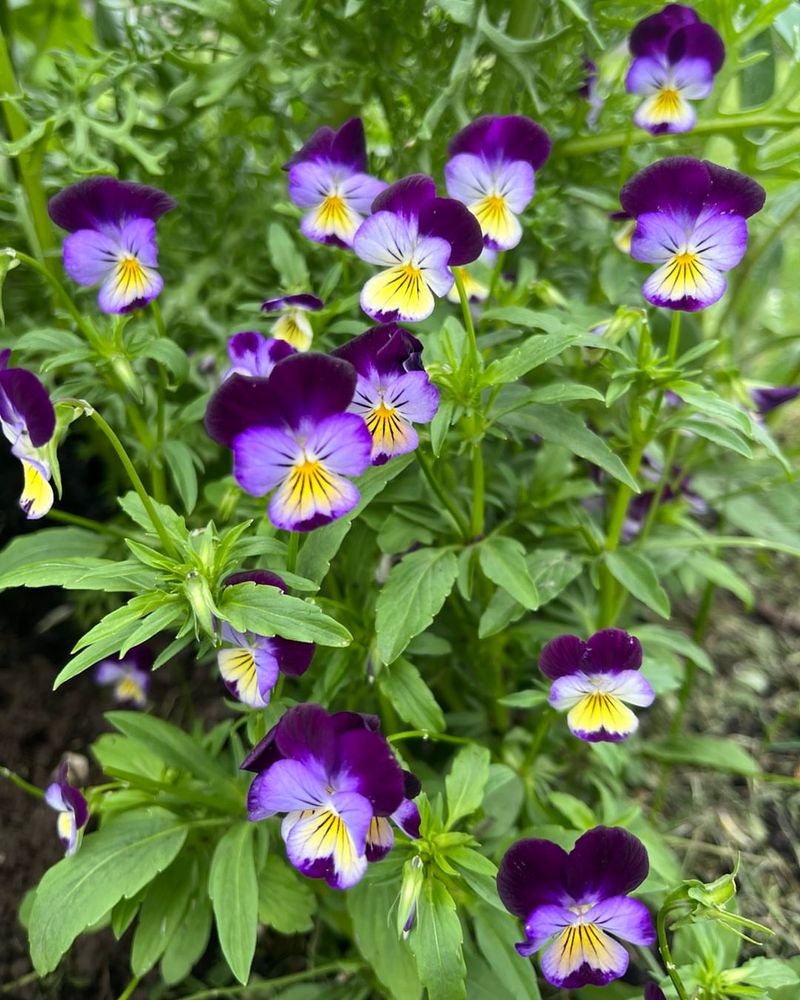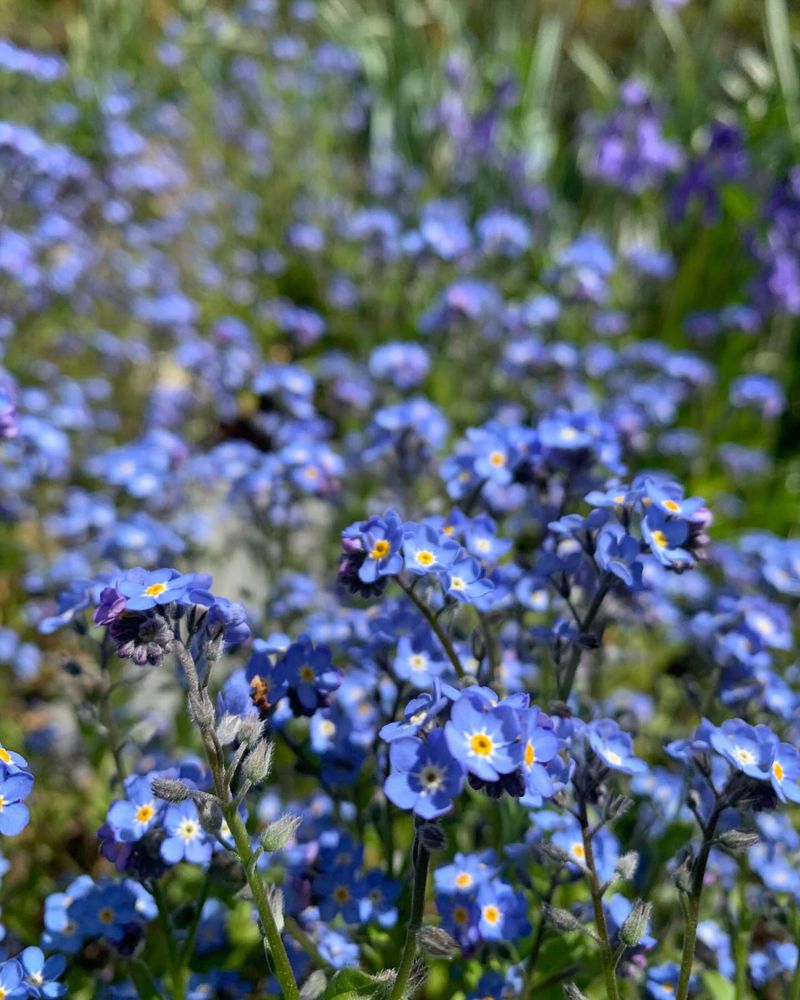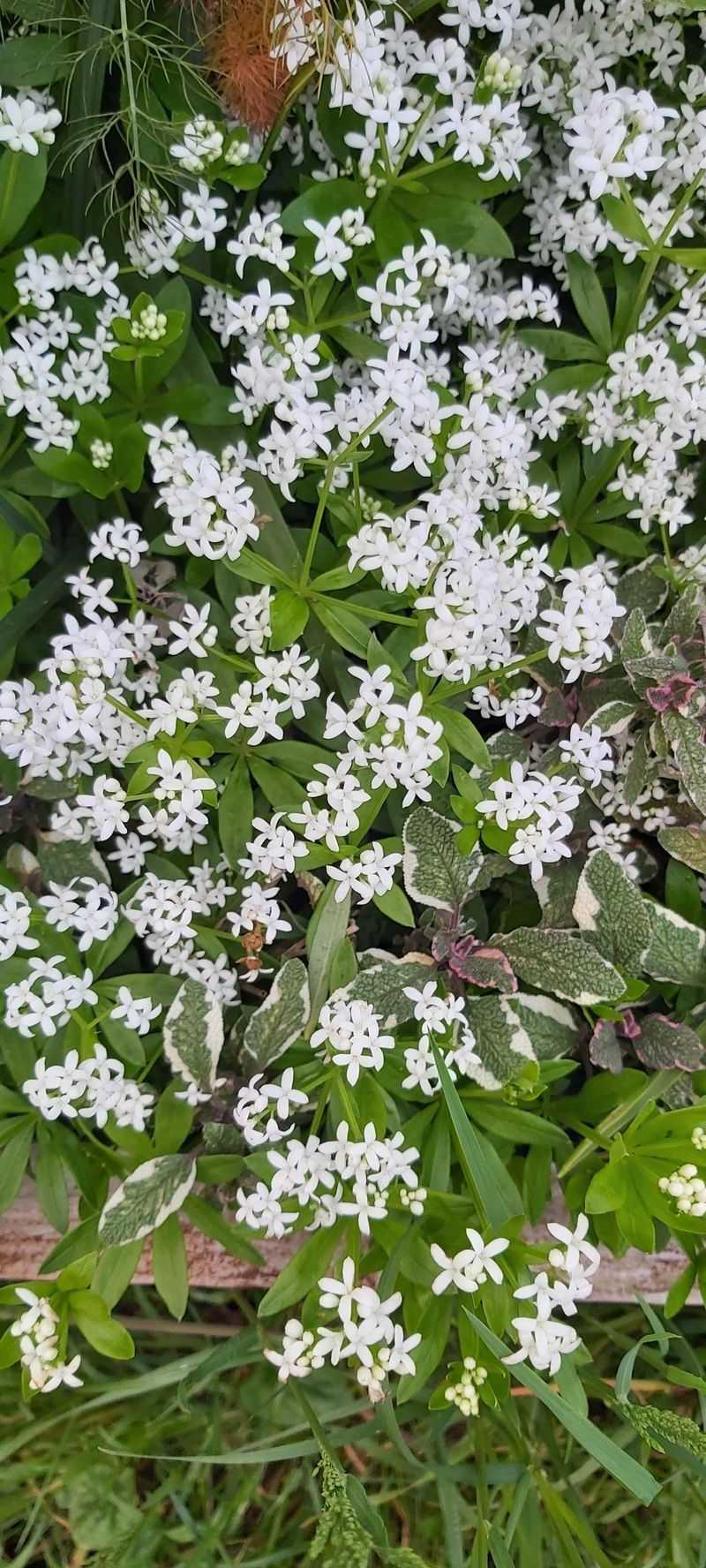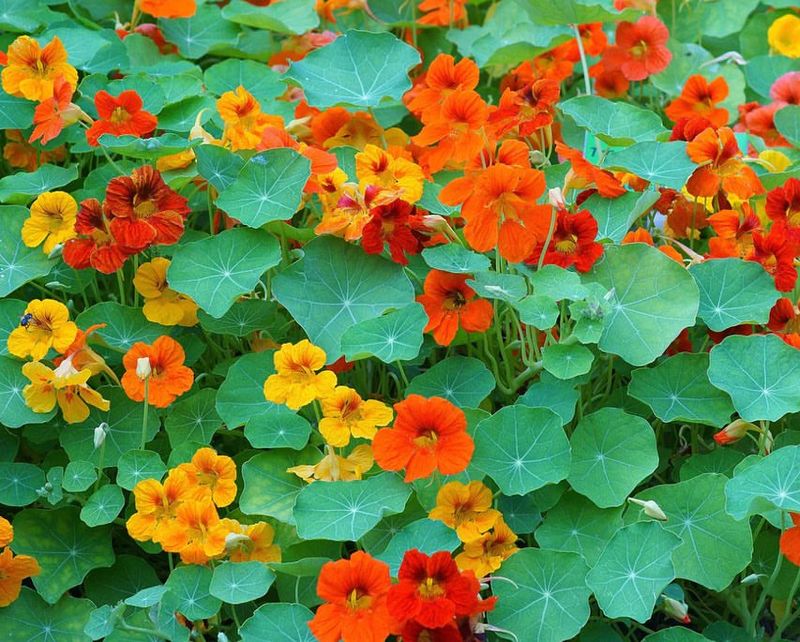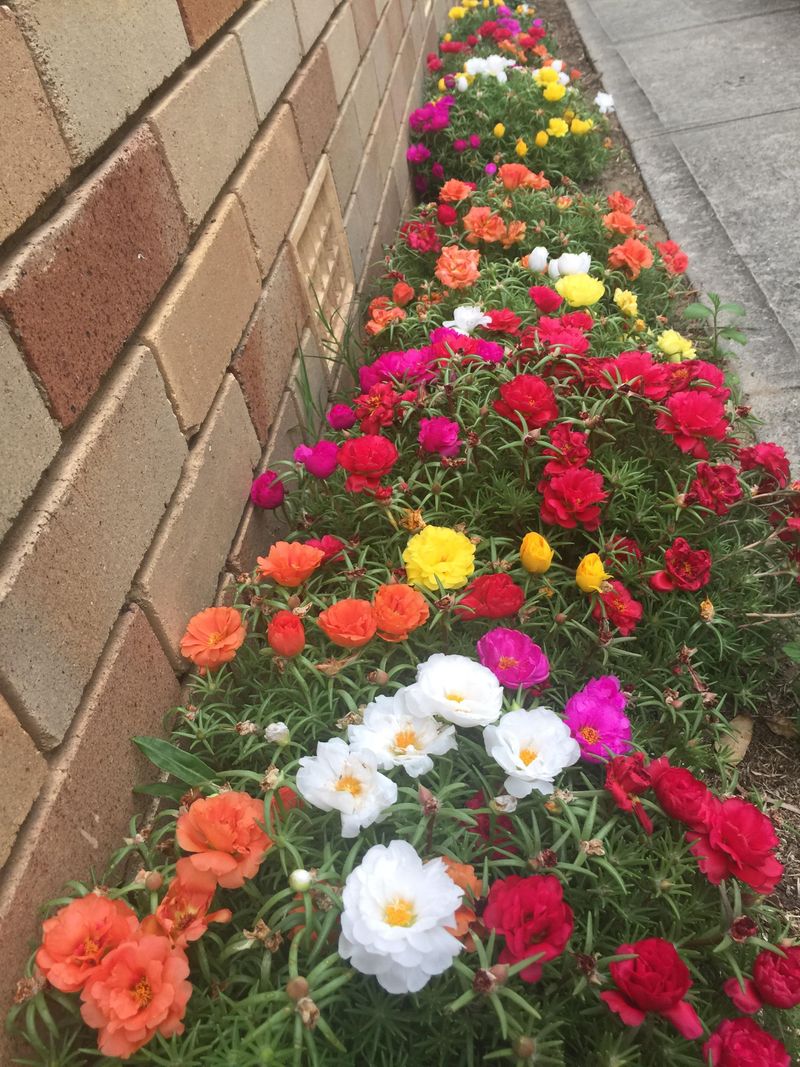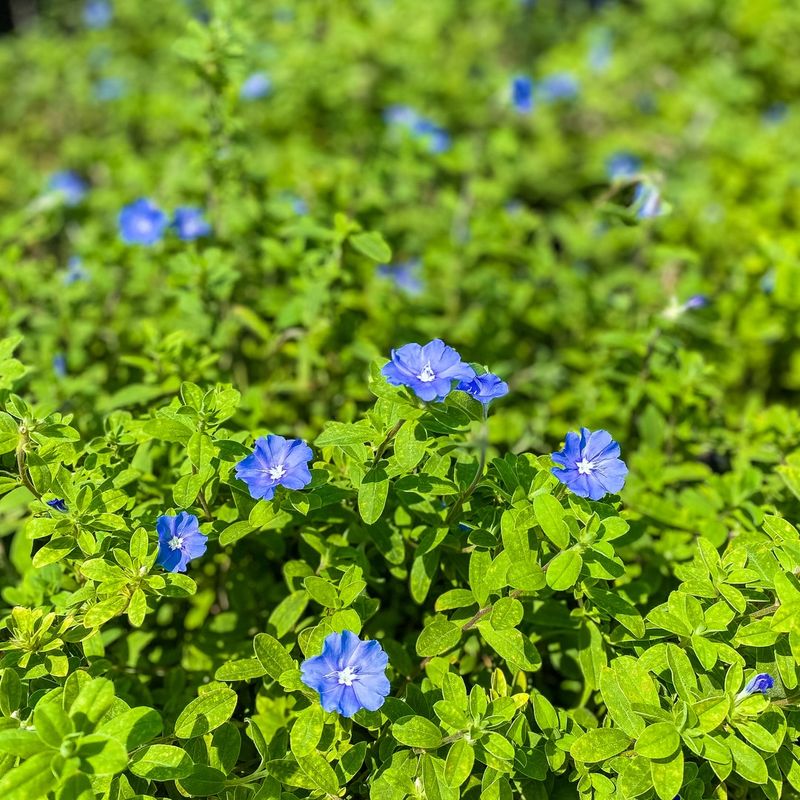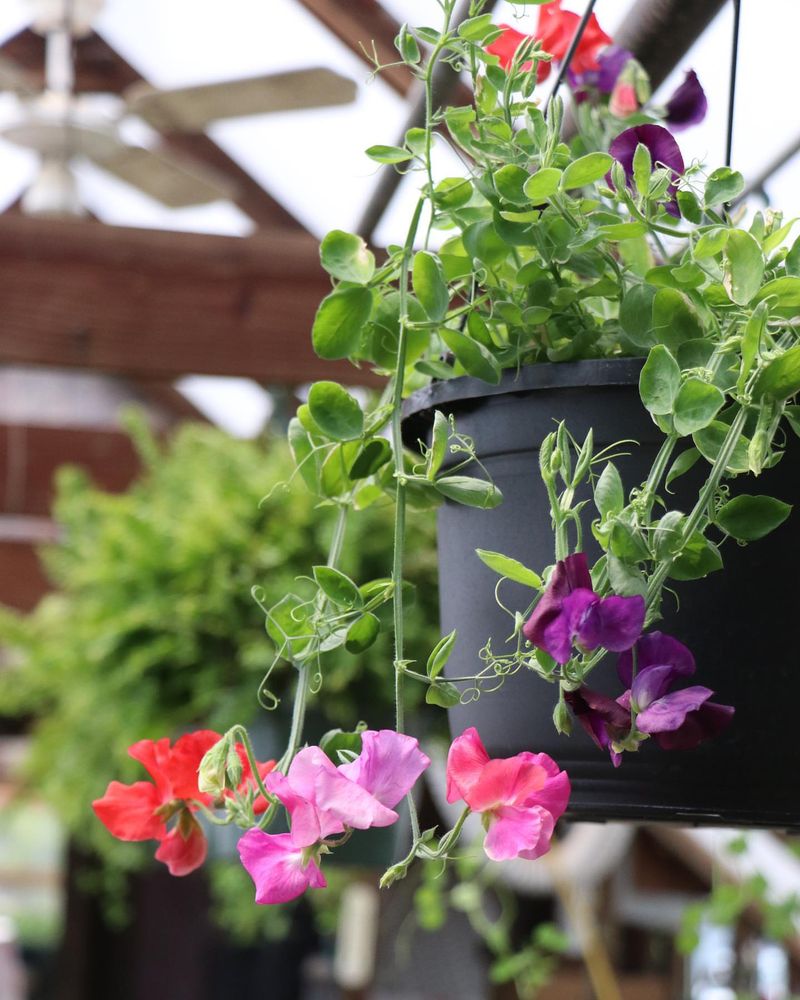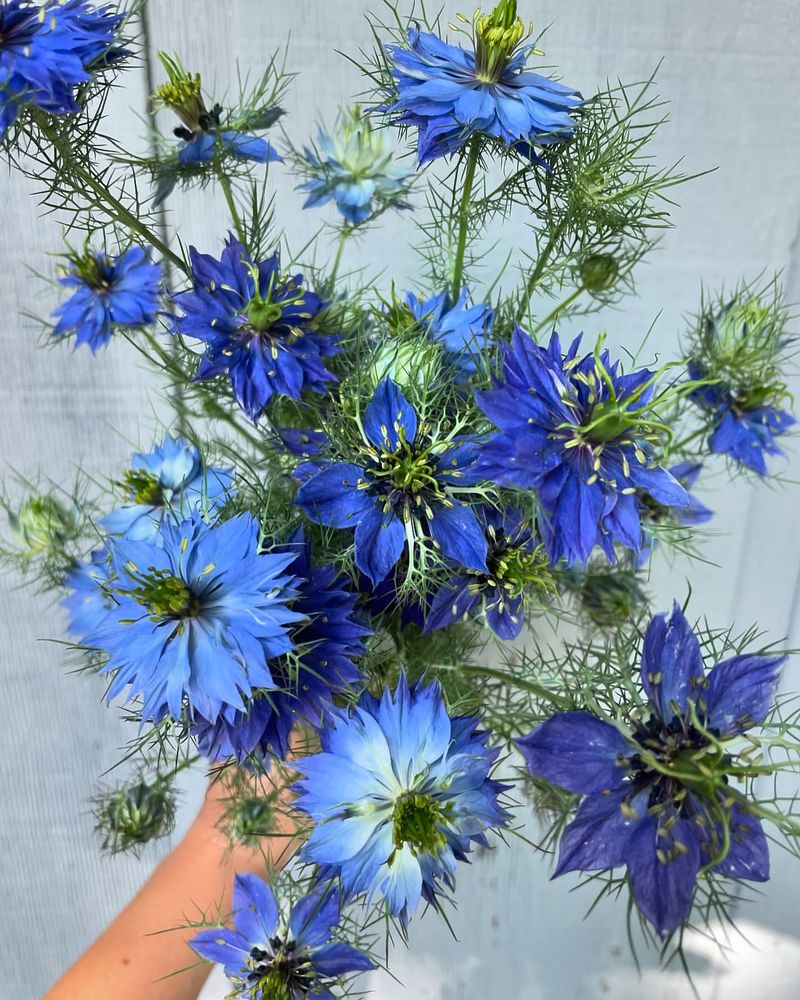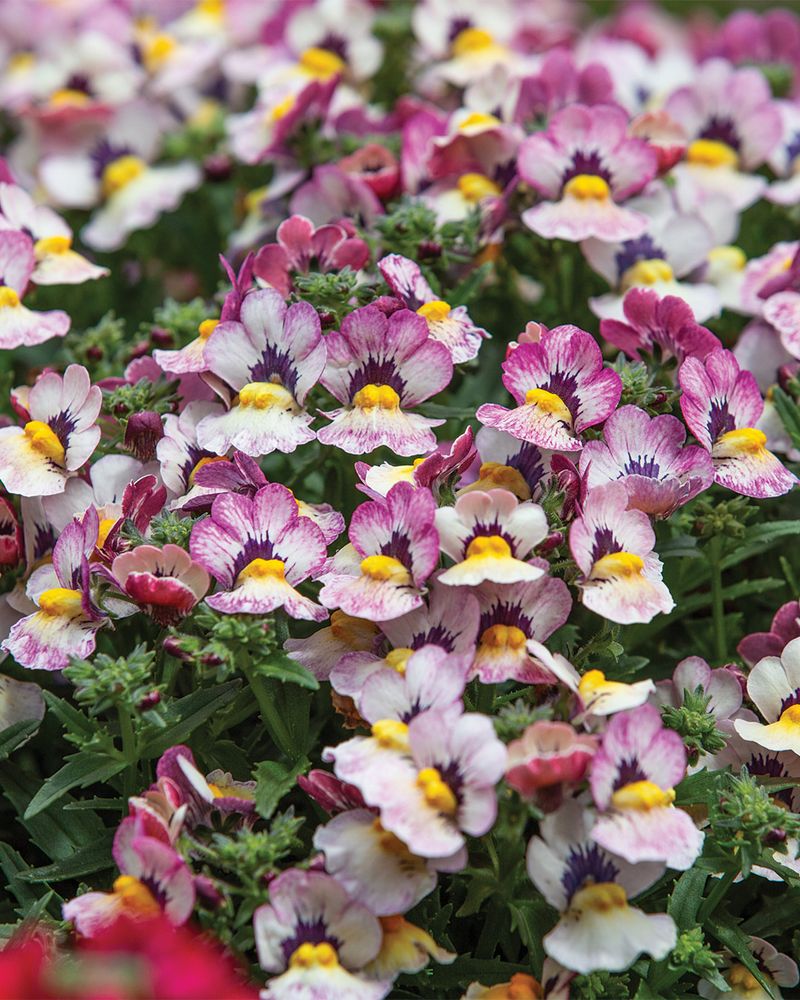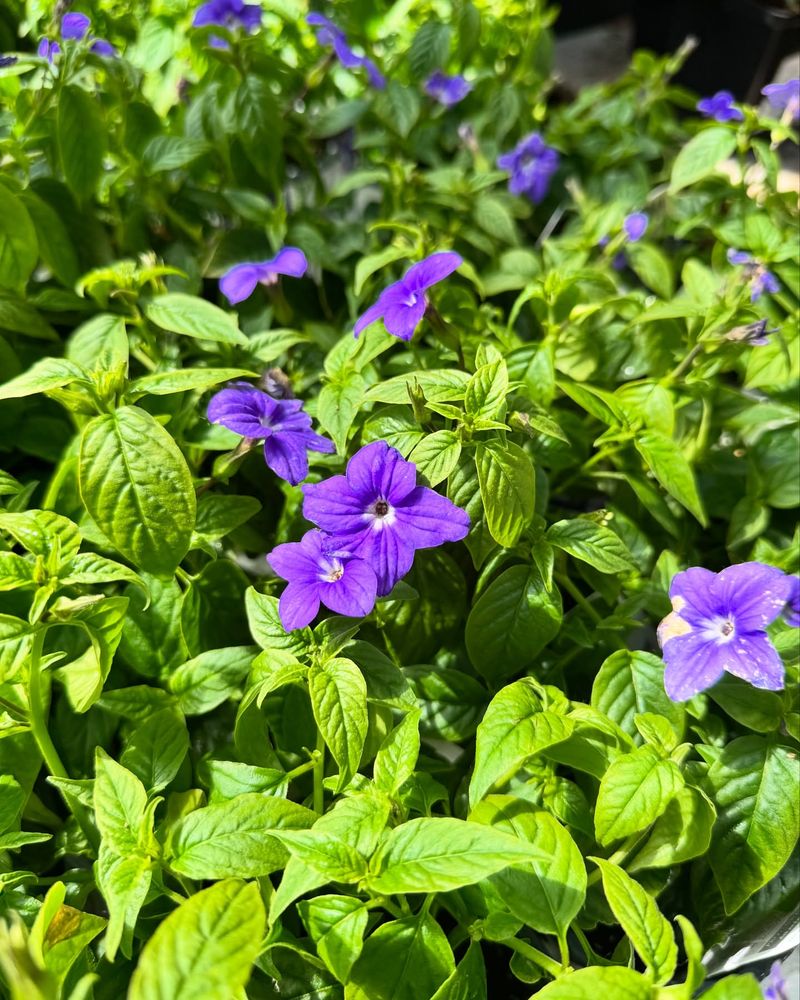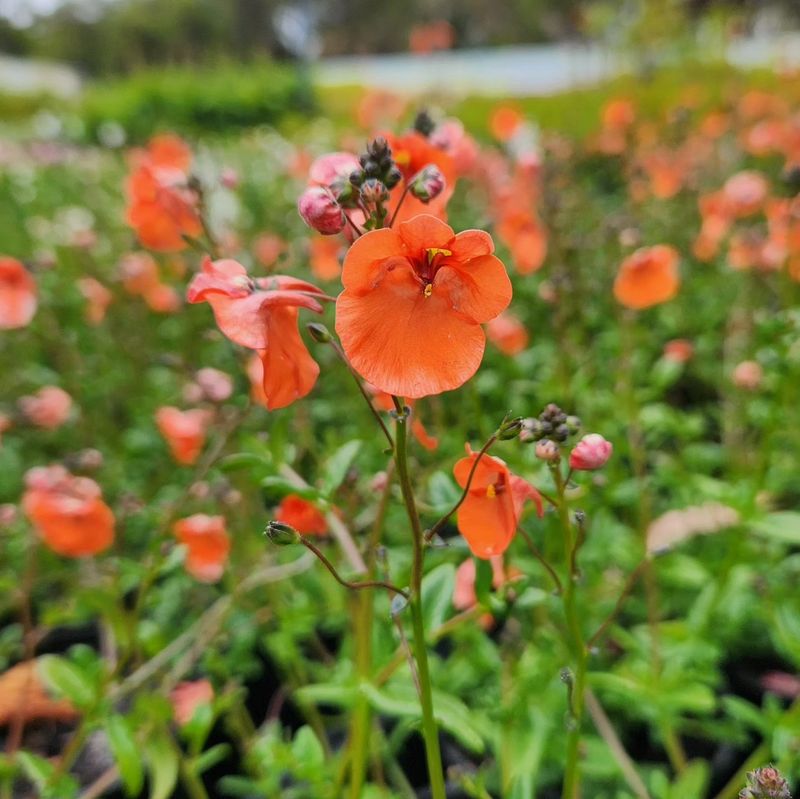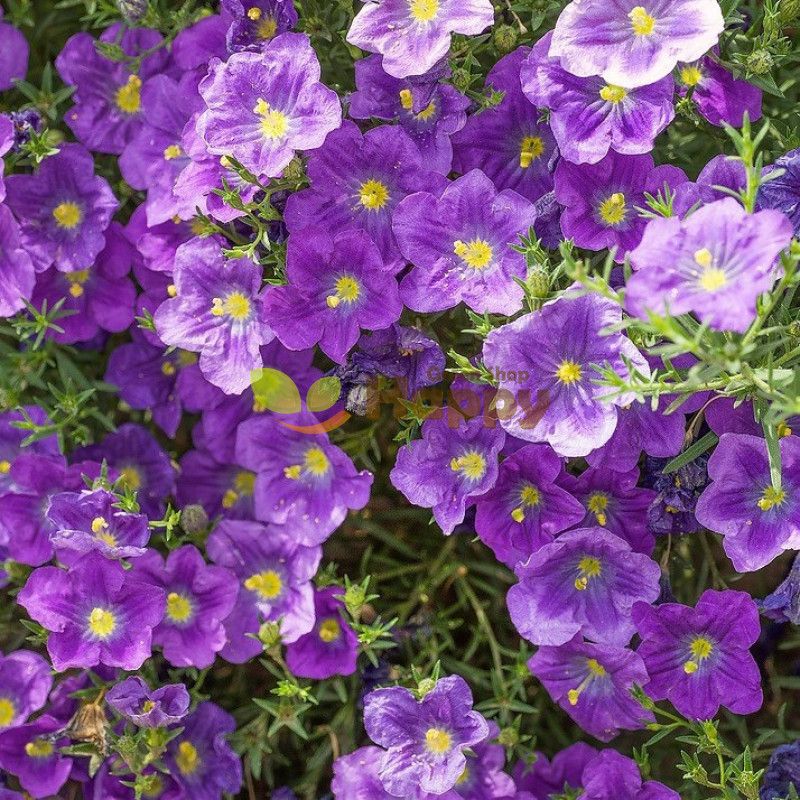Big beauty doesn’t always come in big packages—especially in the garden. Tiny flowers can be just as bold, bright, and breathtaking as their larger counterparts, and the best part? Many of them grow fast and fill your beds, borders, or containers with non-stop color.
After trying a variety of quick-growing blooms, I’ve found these 14 tiny wonders that really deliver. And if you’re craving a little more variety, I’ve thrown in a few bonus picks that add an extra pop of charm.
1. Sweet Alyssum
Delicate clusters of tiny honey-scented blooms carpet the ground in white, purple, or pink hues. Sweet alyssum starts flowering just weeks after planting and continues non-stop through fall.
Perfect for hanging baskets or garden edges, these hardy little flowers can handle light frost and bounce back quickly from trimming. They attract beneficial insects and butterflies while deterring some garden pests naturally.
2. Johnny Jump-Ups
Cheerful faces with purple, yellow, and white markings seem to smile up from the garden bed. Johnny Jump-Ups (miniature pansies) pop up almost overnight when conditions are right, often surprising gardeners with their sudden appearance.
Once established, they readily self-seed, creating new patches of color each year. Their edible blooms make charming decorations for cakes and salads, adding both color and a mild wintergreen flavor to your culinary creations.
3. Lobelia
Sapphire-blue stars cascade from containers and hanging baskets all summer long. Lobelia bursts into bloom quickly after planting, creating sheets of intense color that few other flowers can match.
Thriving in cooler weather, these tiny blooms perform best in spring and fall in warmer regions. The compact growth habit makes lobelia perfect for edges and containers where the waterfall of color can be appreciated up close.
4. Forget-Me-Nots
Sky-blue petals surround sunny yellow centers in these nostalgic woodland flowers. Forget-me-nots sprout quickly from seed and burst into bloom in early spring when many gardens still lack color.
Their ability to thrive in damp, partially shaded areas makes them valuable for difficult garden spots. Though short-lived, they self-seed readily, creating dreamy blue drifts that return year after year with no effort from the gardener.
5. California Poppies
Golden-orange cups open in the morning sunshine, creating patches of intense color within weeks of sowing. California poppies grow from seed to bloom in just 60 days, making them one of the fastest flowering annuals available.
Drought-tolerant and deer-resistant, these native wildflowers thrive in poor soil where other plants struggle. The ferny blue-green foliage provides an attractive backdrop for the silky blooms that close at night and on cloudy days.
6. Sweet Woodruff
Starry white flowers hover above whorls of fragrant green leaves in late spring. Sweet woodruff establishes quickly in shady spots, forming a living carpet that smells like fresh hay when crushed or dried.
Medieval gardeners prized this herb for its vanilla-like scent and medicinal properties. Modern gardeners love how it fills difficult shady areas with bright green foliage and delicate blooms while requiring almost no maintenance once established.
7. Nasturtiums
Jewel-toned blooms in sunset colors pop against round lily pad-like leaves. Nasturtiums sprint from seed to flower in just 35-52 days, quickly covering bare spots with their sprawling growth.
Both flowers and leaves are edible with a peppery flavor similar to watercress. Plant them alongside vegetables to attract aphids away from your crops – they act as living traps for garden pests while adding splashes of orange, yellow, and red to the landscape.
8. Portulaca (Moss Rose)
Miniature rose-like blooms in neon colors open wide in the sunshine atop succulent stems. Portulaca transforms hot, dry areas into rainbow-colored carpets within weeks of planting.
Each flower lasts only a day but is quickly replaced by new blooms throughout summer. Their water-storing leaves and stems make them incredibly drought-resistant, perfect for rock gardens or containers that might be neglected during vacation.
9. Dwarf Morning Glories
Trumpet-shaped blooms in shades of blue, pink, and purple greet each day’s sunrise. Unlike their climbing cousins, dwarf morning glories (Convolvulus tricolor) form neat mounds that burst into color just 50 days after sowing.
The flowers close in afternoon heat, making them perfect for gardens that receive morning sun and afternoon shade. Their compact size works beautifully in containers and border edges where taller plants might look out of place.
10. Phlox Drummondii
Star-shaped blooms in candy colors cover these quick-growing annuals all summer long. Annual phlox races from seed to flower in just 60 days, creating cushions of color that brighten any garden space.
The flowers emit a sweet honey scent that intensifies in the evening, attracting butterflies and hummingbirds. Their ability to bloom in partial shade makes them versatile for areas that receive as little as 4 hours of direct sun daily.
11. Sweet Peas
Ruffled butterfly-like blooms in pastel colors fill the air with their honey-almond fragrance. Dwarf sweet pea varieties start flowering just 50 days after planting, much faster than their climbing relatives.
Victorian gardeners considered these flowers essential for their cutting gardens due to their intoxicating scent. Modern compact varieties like ‘Cupid’ form neat bushes perfect for containers and front-of-border plantings where their delicate beauty can be admired up close.
12. Nigella (Love-in-a-Mist)
Starry blue flowers nestled in feathery foliage create an ethereal, misty effect in the garden. Nigella grows from seed to bloom in just 65 days, with unusual seed pods following that are prized for dried arrangements.
The intricate blooms seem to float above the finely-cut leaves like little stars in a green galaxy. Self-seeding readily, they return year after year without becoming invasive, creating reliable patches of blue, pink, or white flowers each spring.
13. Nemesia
Masses of tiny snapdragon-like flowers in candy colors cover these fast-growing plants from spring through fall. Nemesia starts blooming just weeks after planting, with each plant producing hundreds of flowers over the season.
Cool weather brings out the most intense colors and sweetest fragrance from these South African natives. Their compact size makes them perfect for containers and window boxes where their non-stop blooming habit creates instant, long-lasting color.
14. Viola
Dainty faces with whisker markings smile up from compact plants in every color of the rainbow. Violas burst into bloom more quickly than their pansy cousins and continue flowering through heat that makes larger pansies fade.
Hardy enough to survive light frosts, they’re often the first and last flowers blooming in northern gardens. The edible blooms add color to salads and desserts while their sweet scent (strongest in the yellow and blue varieties) perfumes the spring garden.
15. Browallia
Sapphire-blue stars dance above lush green foliage in shade or partial sun. Browallia begins flowering just 8 weeks after planting and continues non-stop until frost, even in challenging low-light conditions.
Often called “sapphire flower,” this underutilized annual thrives where few other flowers will bloom. The intense blue color (rare in the shade garden) creates a cooling effect in summer borders and combines beautifully with silver-leaved plants.
16. Diascia
Dainty spurred flowers in coral, pink, and apricot hues dangle from slender stems like tiny fairy lanterns. Diascia begins blooming just weeks after planting and continues flowering through fall if deadheaded regularly.
Hummingbirds find the nectar-rich blooms irresistible, hovering around the plants from dawn to dusk. Cool weather intensifies the colors, making diascia especially valuable for spring and fall gardens when other flowers may be scarce.
17. Nierembergia (Cup Flower)
Lavender-blue cups with bright yellow centers cover these compact plants from spring until frost. Nierembergia begins flowering just 10-12 weeks after sowing seeds, creating a sea of color that continues for months.
The neat, mounded growth habit makes cup flowers perfect for edging, rock gardens, and containers. Heat and drought resistant once established, they keep blooming through summer conditions that cause many other flowers to fade and rest.



